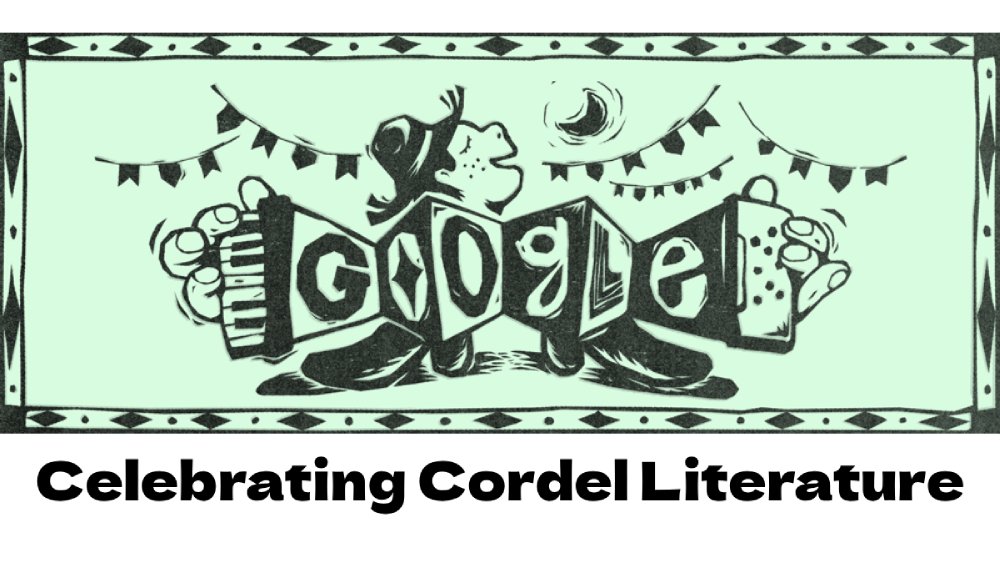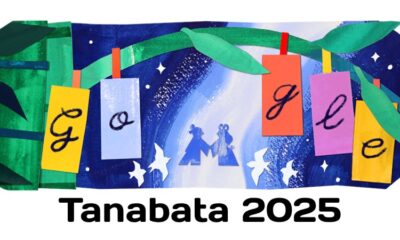Festivals & Events
Google Doodle Celebrates Cordel Literature, a Popular Brazilian Literary Genre; Here are Some Interesting Facts

Today’s Google Doodle honors cordel literature, a popular literary genre in Brazil that consists of rhyming poems that are typically shown hanging from ropes and illustrated with woodcuts. This Doodle celebrates cordel, a form of narrative folk poetry that dates back to the 19th century and originated in northeastern Brazil. Cordel poems and songs are commonly performed at events such as festas juninas (June parties), large summer celebrations that bring entire towns together in Brazil.
Celebrating Cordel Literature Google Doodle
Cordel is typically performed aloud to preserve Brazil’s rich oral tradition and uses language that is simple enough for everyone to understand. Epic adventures, tragic love stories, historical narratives, social commentary, and folk heroes are some examples of story themes. In addition to being narrative in nature, cordel is printed onto chapbooks, which are small pamphlets that audience members can read and sing along with. The front cover of these vibrant chapbooks features unique black-and-white woodcut images.
Talented repentistas (performers) and cordelistas (authors) can display their work and abilities at Festas Juninas. Held in June to commemorate the start of summer, these local festivals invite artists to tell tales of farming, abundant harvests, and other facets of rural life. In addition to cordel, forró, a lively dance music style dominated by the accordion, is played at festas juninas. These parties also feature lots of delicious foods like pamonha (boiled sweet corn paste) and fun games like pescaria.
The artwork honors both of these rich, locally influenced Brazilian traditions by fusing the vibrant accordion music of festas juninas with the woodcut technique of cordel chapbooks.
Interesting Facts about Cordel Literature
- Literatura de cordel, which translates as “string literature” in Portuguese, is a popular and inexpensively printed booklet or pamphlet including traditional songs, poems, and novels.
- In Brazil, particularly in the Northeast, they are made and offered for sale by street sellers and in street markets.
- They acquire their name from the fact that they are shown to prospective buyers by hanging from strings. Cordel is derived from the Portuguese word corda, which means rope.
- Cordel literature is one of the most faithful continuations of Western popular literature traditions, including popular prints and chapbooks.
- The printing of oral narratives became widespread during the Renaissance in the 16th century, marking the start of their history.
- The papel volante tradition of Portugal, which was also prevalent in Spain in the 18th and 19th centuries, is the source of this genre. It offered readers a wide range of topics, from political tracts to basic instruction.
- The term comes from the traditional Portuguese way of selling leaflets, which entailed hanging them from ropes, twine, or thread. In Brazil, it is still a popular literary style.
- The leaflet may or may not be attached to a string, but the name was adopted in Brazil’s northeast region.
- Woodcuts, which are also featured on the covers, are used to illustrate several poems. The most typical stanzas consist of six, eight, or ten verses.
- Woodcuts are utilized on the covers and as illustrations for several poems. Scantas of ten, eight, or six verses are the most prevalent.
- The viola is a musical instrument that is played when the authors, known as cordelistas, repeat these verses melodically and rhythmically. These verses are read aloud or proclaimed to attract prospective customers.
- The Brazilian literary community’s representatives were brought together in Rio de Janeiro in 1988 with the founding of the Academia Brasileira de Literatura de Cordel (ABLC) [Brazilian Academy of Cordel Literature].
- It is considered by poet Carlos Drummond de Andrade to be one of the purest manifestations of the creative spirit, sense of humor, and critical ability of Brazilians from the most impoverished and interior locales.
- Woodcuts are commonly used to illustrate cordel chapbooks, which are normally printed in quarto format in black and white.
- The names of the woodcut artist and author/poet are typically given in the book credits. José Francisco Borges and Adir Botelho are expressive woodcutters whose work has been exhibited at the Smithsonian and the Louvre.
- The cangaceiros of Lampião, a band of outlaws and bandolier bandits that terrorized the region for nearly 20 years, are credited with producing the popular tale that marked the height of Cordel literature in the 1920s and 1930s.
- The states of Pernambuco, Paraíba, and Ceará in northeastern Brazil are still home to Cordel literature.
- Among the most prominent writers from the past are João Martins de Athayde (1880-1959) and Leandro Gomes de Barros (1865-1918).
- Some writers of Cordel literature, including Altair Leal, Davi Teixeira, Meca Moreco, and Marcelo Soares, are preserving this popular expression today. Those authors and others are demonstrating the significance of popular art in Brazil and around the world.
-

 Business4 weeks ago
Business4 weeks agoWhy Hundreds Choose Movers in Raleigh for a Fresh Start
-

 Travel4 weeks ago
Travel4 weeks agoBwindi’s Gorilla Tourism: Saving Wildlife, Empowering Communities
-

 Education3 weeks ago
Education3 weeks agoJoseph Curran: Using Legal Writing and Advocacy to Simplify Complex Issues for Clients
-

 Business3 weeks ago
Business3 weeks agoStop the Bleeding: How Unanswered Comments Increase Your CAC
-

 Tech3 weeks ago
Tech3 weeks agoGoogle Offers New Travel-related Features To Search And Launches Its AI “Flight Deals” Tool Around The World
-

 Tech3 weeks ago
Tech3 weeks agoAdsPower Promo Code for 50% Off – Ultimate Guide to AdsPower Benefits (Referral Code Included)
-

 Tech4 weeks ago
Tech4 weeks agoAI Window in Mozilla Firefox: What is It, What’s New and How It Works
-

 Cryptocurrency1 week ago
Cryptocurrency1 week agoRami Beracha Asks, Can Israel Become A Global Leader In Blockchain Innovation?




















